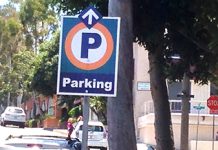The City Council unanimously passed a view ordinance last week, 15 months after then Mayor Kelly Boyd selected a committee to devise a law enforceable by city code.
Despite the committee’s efforts to incorporate suggestions from proponents and critics, some residents continue to think the ordinance is too weak, with parameters that exclude guest houses and how far back a property owner can claim a pre-existing view. Others find it too strong and fear it will result in the denuding of Laguna Beach and the loss of neighborhood character.
The Council stopped short of formalizing fees to process claims under the new ordinance, which could cost $365,000 citywide in the first year, staff estimated.
“This is not going to be perfect,” admitted Council member Steve Dicterow. But we won’t know until we try, he said, summing up a consensus among supporters such as Ed Sauls, who called for adopting the ordinance now and tweaking it as problems arise.
No policy is perfect, but “there are too many things wrong with this one,” said Tom Osborne, who joined detractors in calling for a vote by the full electorate.
The newly written law replaces an existing view preservation ordinance that went into effect on Nov. 4, 2003, and was derided for lacking teeth.
Take a homeowner who moved into a home with a prized ocean view, only to have that vista slowly eclipsed by the poorly maintained trees of a negligent or spiteful neighbor. The previous ordinance provided for voluntary mediation with no guarantee of a resolution.
Under the new law, a homeowner has recourse to an enforceable result, provided that the obstructing vegetation is within 500 feet of his property and provided he can prove the view existed either at the date of purchase or at the time the original ordinance went into effect in 2003, whichever is earlier.
Modeled largely on a court-tested ordinance from Rancho Palos Verdes, the re-written ordinance encourages neighbors to cooperate. The view restoration claimant must first prove that he tried to reach an agreement with the tree owner before coming to the city for recourse. At that point, the homeowner can file an application for a notice of intent to file a claim, which triggers a city-facilitated mediation. A majority of the view issues in Rancho Palos Verdes are now resolved in mediation, according to the staff report.
If the mediation fails, the claimant can then file an application for a view restoration claim, including evidence of the pre-existing views. The five-member view restoration committee will visit the property and hold a publicly noticed hearing. If they find that a significant view is impaired, they can issue a view restoration order, including a long-term vegetation maintenance schedule, and the vegetation owner must comply, subject to code enforcement.
Once it becomes known that there is an ordinance with enforcement, “most neighbors will happily sit down and work things out,” predicted resident Daud Ahmed, expressing the generally held view of many supporters. Barbara Miller, on the other hand, pushed for more fine-tuning to prevent neighbors from suing each other and the city.
Under the new rules, the claimant pays a view restoration claim fee and covers mediation costs. The claimant also pays for the initial cost of trimming the offending vegetation, with the vegetation owner responsible for ongoing maintenance. However, the view restoration committee will have the discretion to require the vegetation owner to also pay some of the costs.
The ordinance doesn’t deal in dollar amounts, but the staff report proposes a $630 claim fee, puts a $2,500 price tag on appeals to the City Council and estimates mediation costs at a minimum of $500. The cost to implement the new rules in the first year — including staff, equipment and fees for fees for arborists and mediators –was estimated at $365,000, based on 40 claims, the staff report said.
Council members balked at the estimate and proposed seeking ways to lower those costs. Council member Toni Iseman said she did not want the city to spend what amounted to $9,000 per claim, and suggested the application fee might be raised to offset expenses. “I think we can whittle it down and make it a lot more cost effective,” said Council member Kelly Boyd, who agreed that charging claimants higher fees might be in order to offset administrative costs.
Residents, too, balked at the cost. “It’s not fair for the rest of the city to be paying for one person to fight a view,” said Bonnie Hano. “If the city pays for it, we pay for it.”
“This whole ordinance is a moving target,” said City Manager John Pietig, who noted that everything was guesswork at this point.
The new ordinance resolved two points of contention disputed by the public and the Council in previous drafts, the altered hedge height ordinance and an indemnification clause.
The new ordinance leaves the hedge height ordinance intact, stipulating instead that vegetation of six feet and less be subject to the hedge height ordinance while higher growing vegetation falls under the jurisdiction of a view restoration claim.
Likewise, a clause requiring the view claimant to indemnify the city against any liability and pay expenses if the city’s ordinance faced a legal challenge is now gone.
“I think it’s well written, and I think we should adopt it,” said Chris Toy, one of eight people on the drafting committee.




